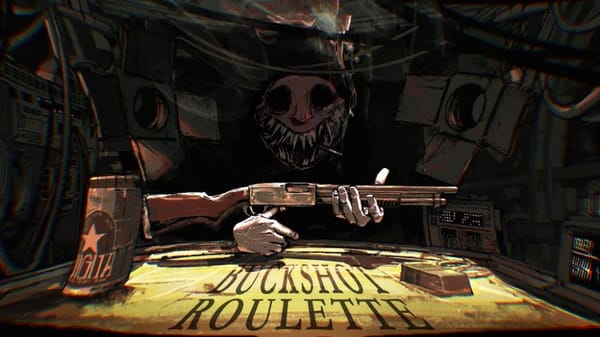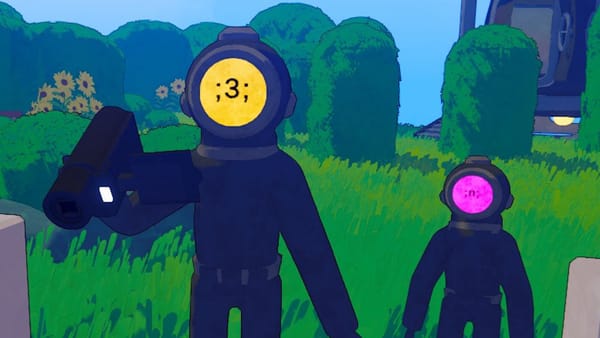Beneath Oresa is on top of its game
Fans of almost any of the card-based deckbuilder roguelikes of the past few years would conceivably have a great time in Beneath Oresa.
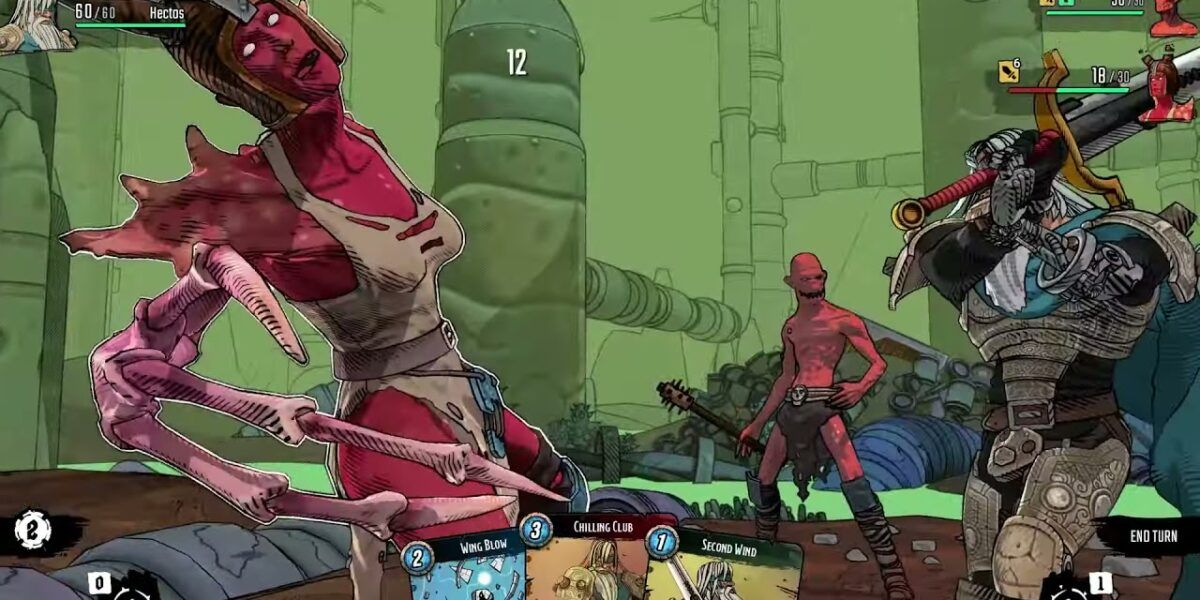
Written by Blue
“Ultimately, we are all drawn here to unravel what lies Beneath Oresa”. The opening narration does an excellent job of setting the tone of the game. Be it adventure, power, or wealth your goal in the game is straightforward. Delve into the ruined city of the gods and return to tell the tale with glory.
“Crunch” – The sound of a fist collapsing a ribcage
The first thing I noticed about Beneath Oresa is its presentation. Specifically, how it sounds. The deep crunchy hits go well with the cell shaded models that are smoothly animated to give the player a very fluid feeling to what is now an entrenched card based combat system. The cards are responsive and snappy. Character motions flow into each other nicely and you’re able to click through multiple cards at once before sitting back to enjoy the brutality of Oresan combat.
Check one two. Maybe three or four too
The next thing that caught my eye is the amount of information needed to play the game. Action points, enemy intent, block, fury, temporary fury, stances, health… the list goes on. Some of this is straightforward enough if you’re familiar with the genre. Keep your health above 0 or die. Action points dictate how many cards you play per turn. Enemy intent is telegraphed so you can predict what enemies will do.
To a certain extent it all makes sense and if you’re someone coming off of ascension runs in Slay the Spire, then this will be second nature. But for those of us who isn’t, there’s going to be a relatively steep learning curve involved. Do a run, make mistakes, learn from mistakes, and then possibly die. It actually does fit into the concept of a roguelike in that regard. Part of what you take away from the early runs is just how the game functions and operates.
The lackluster tutorialisation will likely be a sticking point for any newer players to the genre, but connoisseurs of the Slay the Spires or Monster Trains should quickly find their groove. And to be honest once you do find your groove there really isn’t too much overhead. After only about 3 runs in, I could see deaths and the inevitable end of my run coming a few turns out, as I slowly lost the battle of attrition against the relentless string of enemies.
Factional Differences
So let’s talk specifics and what makes Beneath Oresa stand out from the pack. The presentation – a package of solid visuals are satisfying sounds – that I mentioned before are one. The class system would be the next to touch on. There are three factions in the game that each offer their own brand of fun.
The Tainted Ones are individuals who suffer from disease known as the Cobalt Curse. Gameplay wise, these characters are looking for multiple ways to add and manage virus cards in their deck. Virus cards on their own are bad, but accumulating specific amounts of them unlock immediately powerful effects such as extra actions, extra cards, and sometimes just straight up extra damage.
House Agiça de Ferady are filled with the paladins of the setting. The gameplay gimmick of these holy warriors is a straightforward but powerful counter-attack. Fill a charge gauge, and fully block and counter attack the highest damage melee hit during the next enemy phase. House Agiça is probably the most straightforward of the three faction’s gimmicks, but the ability to fully strategically nullify any amount of melee damage is extremely powerful.
Finally the Guild of the Ruinfarers are experienced adventurers for hire who have turned dungeon delving into a business. The Ruinfarers are the faction to turn to if you enjoy chaining cards together with a pinch of randomness. Their faction ability revolves around guns and ammo. At the very base level every round you choose between reloading more ammo for attacks or getting a random card for the turn.
Underneath each of the 3 aforementioned factions are specific heroes. They come with another perk on top of the factional gimmick as well as 3 hero cards added to the base deck. At time of writing, there are 3 possible heroes per faction, bringing the total playable characters up to 9. The combination of faction and hero perks are what truly drives the diversity of play between runs for Beneath Oresa.
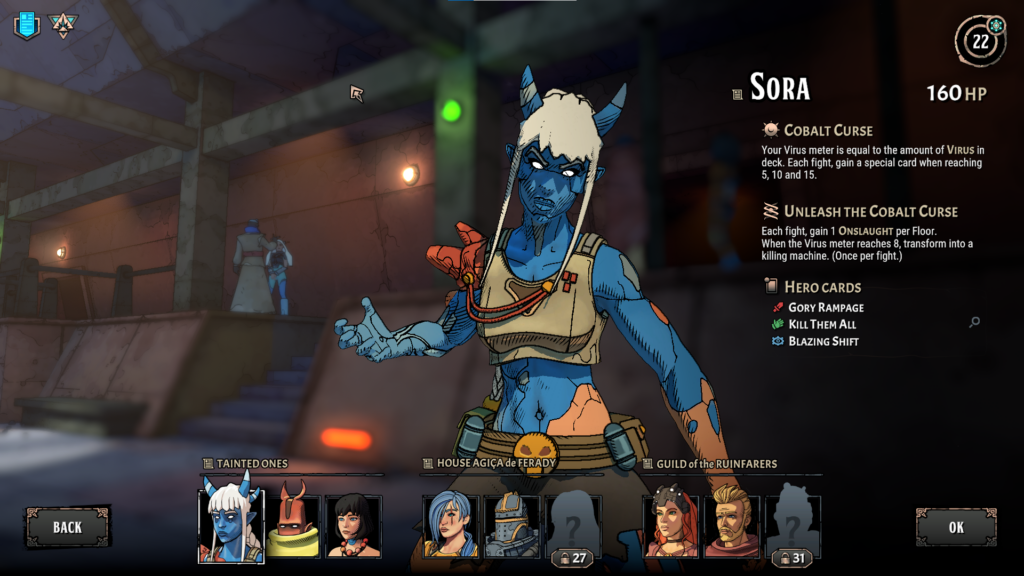
So far across a handful of runs, I’ve found moderate success pushing a different archetype every single delve into the dungeons. The game is quite aware of the value of a lean deck. Rewards that give cards must be taken. Rewards that remove cards are valued quite highly. The progression of gameplay means that the deck will continue to evolve even if you find your sweet spot early in the run.
Combat as you’d expect, but with a pinch of spice
Let’s talk about the nitty gritty of combat. Every turn the player gets a default of 3 action points to play out cards. To start with, you have the humble attack and block. As you progress you slowly add (or even remove) cards with potentially more varied and esoteric abilities. Hit an enemy, but maybe also reduce their damage for a turn. Add block, but also filter unwanted cards out of your following draw. There is a wide variety of cards that tempts the player down various builds.
An extra and welcome complication to the combat system is the concept of zones. An enemy can either be near or far from your character. Melee attacks always bring you into a far enemy’s zone (incurring no extra cost), and some cards even play with the zones by knocking foes back or adding more block if there are enemies in the far zone.
It seems a simple concept, but the game’s enemies dance with this element beautifully. As a simple two part example, enemies can sometimes launch a hailing attack. This spreads the damage out across you and any other enemies in the zone, meaning you want to share the near zone with as many enemies as possible and let them hurt each other. A counter example would be an aimed attack where an enemy will deal more damage if you’re in a separate zone. Simple enough, just use a melee attack to rush in and effectively reduce damage while also hurting the gunman.
These specific enemy intents are conveyed via the stance system in the game, which prominently sits next to their health bar. It changes every turn and understanding it is key to controlling the flow of combat. Having said that, it is surprisingly simple to internalize the pertinent information every round from just a quick glance at the screen. For a game that boasts such large variance, it is fairly elegant in how it implements everything to keep the player afloat instead of drowning them in “well you should have seen that coming”.
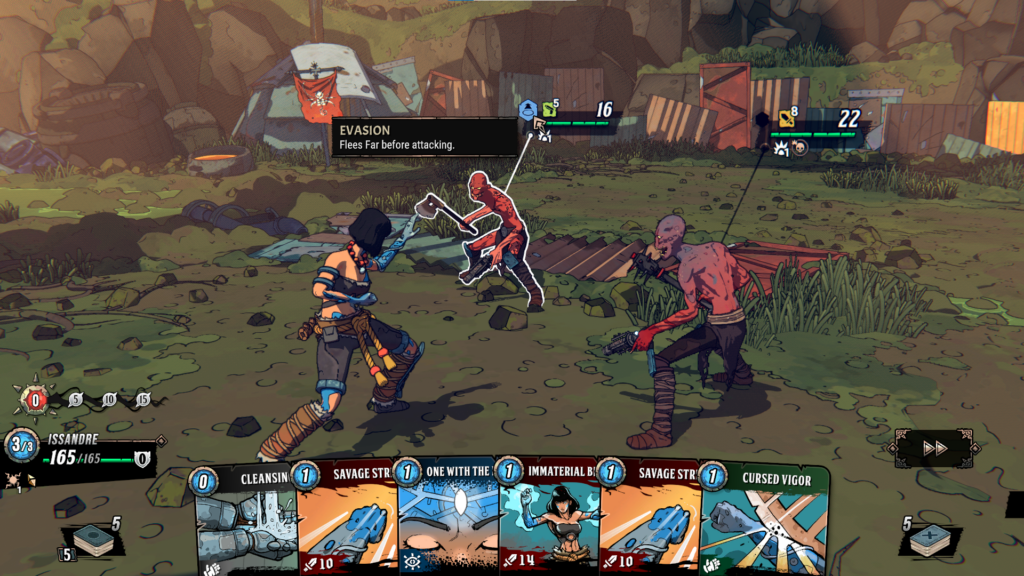
There is a lot more to Beneath Oresa from a gameplay perspective, but this is meant to be more of a review rather than a comprehensive guide. Suffice to say, there are a lot of small dials to twist and levers to pull that ramp up the diversity in gameplay you would come to expect from a modern roguelike. Ultimately, I don’t think there is anything wholly unique in here that will turn the genre on its head, but is instead a highly polished, well thought out, and most importantly fun version of a lot of the tropes you’d expect from a card-based deckbuilding roguelike.
Iterating on a classic (in a great way)
So for the discerning roguelike enjoyer, how does Beneath Oresa stack up against other classics in the genre? There is clearly a lot of inspiration taken from Slay the Spire. The overall pacing of a dive into Oresa is extremely reminiscent of climbing the spires. There are 3 floors per expedition. Each floor is a series of combat encounters interspersed with opportunities to upgrade your deck and finally caps off with a champion encounter. Surviving this clears the floor, offers some final rewards, and then heals you up to max for the next one.
However, where I think Beneath Oresa surpasses the seminal classic is in the finer details. We can clearly see how far the design of card-based deckbuilders has come. At first I was a little overwhelmed with all of the statuses to keep track of, numbers to crunch, stances to check, etc. It reminded me quite a bit of Across the Obelisk and how I just felt fatigued by how many numbers affected every small decision. But eventually the learning curve smoothed out and I’m happy to say that Beneath Oresa hits the Goldilocks Zone in terms of complexity that fits in my head at once.
Conclusion
Fans of almost any of the card-based deckbuilder roguelikes of the past few years would conceivably have a great time in Beneath Oresa. The game spreads its net pretty wide to offer something for most fans of the genre. I was personally drawn in by the snappy game-feel and got hooked by House Agiça de Ferady’s counter mechanic. The developers really understand that sometimes a mechanic will just click with certain players and did their best to offer a wide selection. Potentially as a consequence of that, a player completely fresh to the genre will probably have a pretty steep learning curve. If you’re willing to tough it out though, I do think that there are fantastic experiences waiting for you Beneath Oresa.
